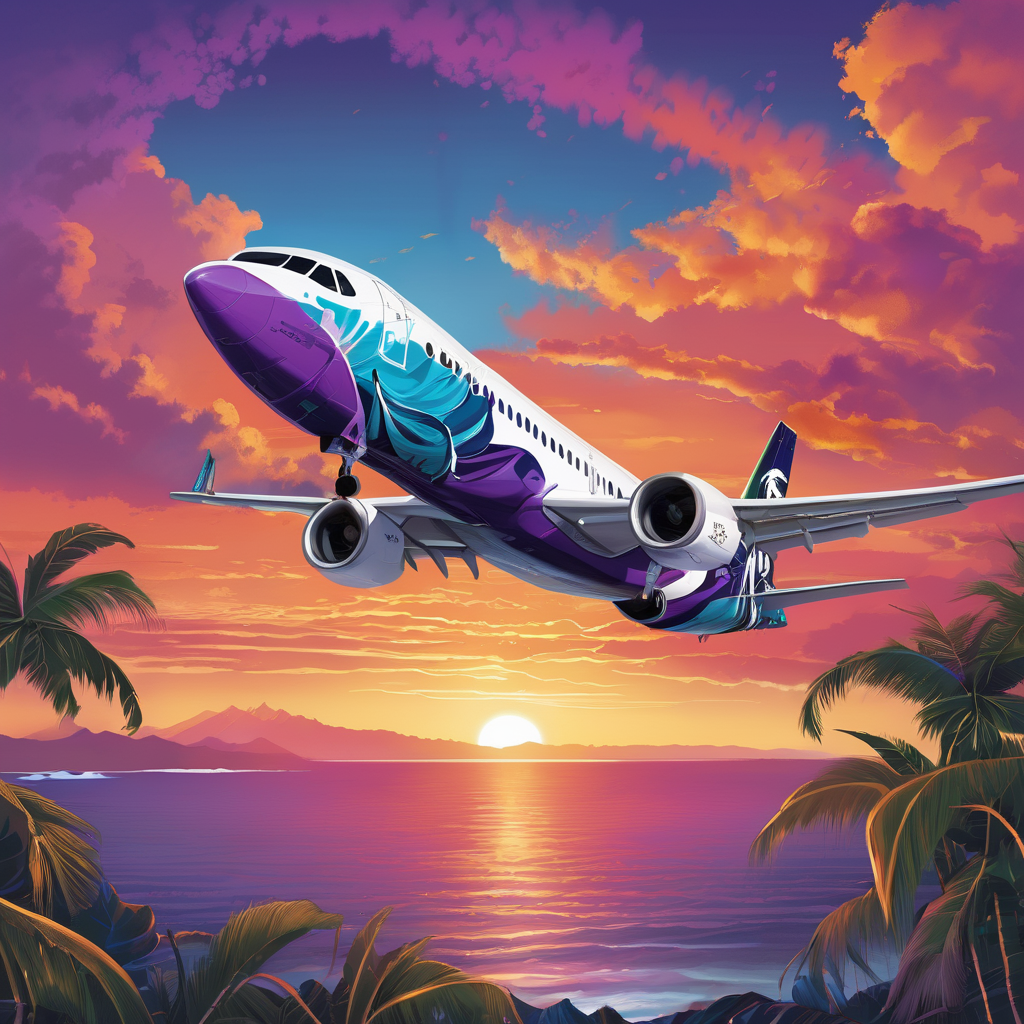The Main Squawk: Alaska is opting to isolate the Hawaiian brand to Hawaii-only flying
At some point next year, Alaska and Hawaiian will no longer operate as two airlines. They will have one operating certificate, one crew scheduling department, one technical operations center, one boardroom, and one set of standards. Under the hood, the Airline will operate as one, yet under two distinct brands, prompting the question: how?
Earlier this month, Alaska CEO Ben Minicucci explained the plan. The idea is that flights that touch Hawaii will retain the Hawaiian Airlines brand, and all other flying will be flown under the Alaska Airlines brand. A solution like this sounds simple enough, but it also isolates the Hawaiian brand—and aircraft painted in Hawaiian colors—exclusively to Hawaii. Will that stop Alaska from hot swapping an airplane painted in Hawaiian colors for an airplane painted in Alaska colors? I doubt it, but it’s certainly going to look a little silly.
Alaska’s fleet predominantly consists of Boeing 737 aircraft1, operating them along routes that span as far as Anchorage to New York-JFK. Hawaiian’s fleet is a bit more complex, operating a fleet that ranges from Airbus A330s to Boeing 717s to Airbus A321s to Boeing 787s. Each of these aircraft have very different missions, but to an airline that only flies 737s, the world is its oyster now. It will be interesting to see how the combined airline reallocates these planes and which markets they wind up serving.
American got a lump of coal for Christmas when a short-lived glitch with an IT vendor caused the Fort Worth-based airline to grind operations to a halt on Christmas Eve. The temporary grounding was first announced at 6:50 AM ET when the FAA received an order from the Airline’s Integrated Operations Center (IOC) to stop all American Airlines flights nationwide. Exactly one hour later, at 7:50 AM ET, the ground stop was cancelled.
Initial reports revealed that pilots were unable to receive their flight plans prior to departure, prompting a legality issue. To much of the industry’s surprise, the Airline was able to restore its operation swiftly upon patching the glitch. By the end of the day, American reported nearly 1,000 delays, but hardly a dozen cancellations.
United is expanding its trans-Atlantic footprint by launching a daytime Washington-IAD to London-LHR flight in October 2025. This flight will be the third flight the Chicago-based airline operates between the two cities. The route will be served by the Company’s Boeing 757-200 fleet, forty of which are in service today.
The reintroduction of the flight is particularly notable because daytime service between North America and Europe is becoming increasingly rare. Delta ended its last remaining daytime trans-Atlantic flight between New York-JFK and Paris-CDG in October 2024. American is ending its morning flight between Chicago-ORD and London-LHR next year, but will keep one morning flight between New York-JFK and London-LHR on its schedule in 2025.
Boeing says it will be able to ramp-up production of its 737 MAX aircraft to thirty-eight (38) jets per month by May 2025, according to a report by Jon Ostrower at The Air Current. Thirty-eight aircraft per month is the current maximum output set by the FAA in light of the Company’s troubles. Earlier this month, You’re On Guard! reported on the outgoing FAA Administrator’s thoughts on Boeing’s production plan, adding that he’d be surprised if the manufacturer could reach the regulator’s imposed production cap by Spring 2025.
The proposed plan to increase production comes as at least one of the Company’s suppliers warns that the airplane manufacturing giant “is at risk of repeating past mistakes” by ramping up production too quickly.
FAA Administration Michael Whitaker will likely leave the FAA when Pres. Trump takes office next month. It is unclear how the incoming FAA Administrator will react to Boeing’s suppliers, if at all.
American knows its Boeing 777-200 fleet is getting old and is trying to figure out what to do with them. Last month, CEO Robert Isom spoke about the Company’s widebody fleet at Skift’s Aviation Forum in Dallas and revealed that the Company is evaluating their options.
Mr. Isom explained that the Airline can opt to retrofit the aircraft’s interiors, or opt to replace them with new metal, illustrating just how little he was prepared to provide details on the topic.
American will begin requiring pilots to perform a “post-flight inspection” when terminating at an outstation.
Spirit Chief Commercial Officer Matthew Klein is making claims that Legacy carriers single-handedly created the “pilot shortage” by robbing Spirit of its pilots. Maybe if Spirit had a better contract—and a better product—its pilots would never think to leave in the first place.
Southwest completed its involuntary safety audit by the FAA, yielding absolutely no violations whatsoever.
United pilots cannot seem to get a grasp on their market-based cash balance plan: source.
- Alaska also operates a fleet of Embraer 175s, flown by its wholly-owned regional subsidiary Horizon Air and SkyWest, but we’ll save the topic of Alaska’s regional operation for another day. ↩︎

Leave a Reply